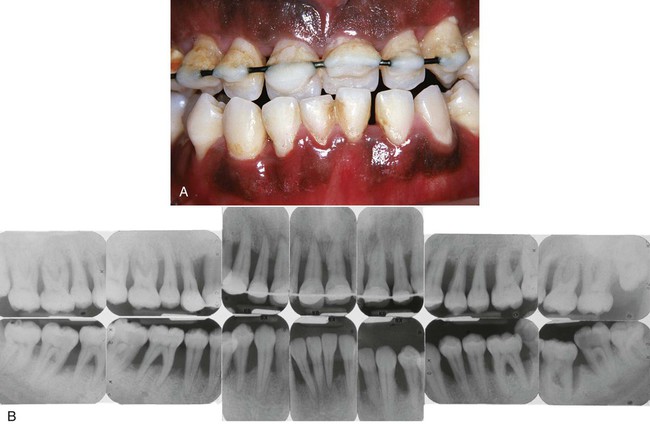Offices Have To Say About Net32. Compares Pricing To Help You Save. What does aggressive periodontitis mean? How serious is periodontal gum disease?

What are the causes and symptoms of periodontal disease? Is it possible to cure periodontal disease? Aggressive periodontitis is a multifactorial disease with many complex interactions including host factors, microbiology and genetics. Both chronic and aggressive periodontitis share major environmental and genetic risk factors, and some clinicians find the differential diagnosis between these two diseases difficult and impossible.
Smoking, oral hygiene, and psychological factors seem to play a role in both chronic and aggressive periodontitis. A number of systemic conditions, such as diabetes and cardiovascular disease , have been implicated in the development of periodontitis in susceptible. Depending on the time of diagnosis and the intensity of the disease , the treatment will vary accordingly. A contemporary case definition of this disease is presented. Population studies show that the disease is more prevalent in certain geographic regions and ethnic groups.
These unusual entities often do not respond well to conventional therapy owing to the complex nature of the disease. Common features include rapid attachment loss and bone destruction and familial aggregation. Necrotizing periodontal disease is characterized by the death of gum tissue, tooth ligaments and supporting bone caused by lack of blood supply (necrosis), resulting in severe infection.
Chronic periodontitis in inflammation within the supporting tissues of the teeth, progressive attachment and bone loss. This type generally occurs in people with a suppressed immune system — such as from HIV infection, cancer treatment or other causes — and malnutrition. I was intrigued how closely periodontal disease is similar to scurvy - which is a disease caused by vitamin C deficiency. So I started taking a huge amount of vitamin C. The first day I took grams of vitamin C - that is a gigantic amount that should cause diarrhea but had no ill effect.

Learn Facts About The Difference Between Gingivitis And Periodontitis. It can be either a localized form, in which molars and incisors are affecte or generalized. Associated bacteria are Actinobacillus actinomycetemcomitans and Porphyromonas gingivalis. Periodontal disease is an umbrella term for a number of pathologies that affect the supporting structures of teeth.
Periodontitis can be further subcategorized into three broad classes based on radiographic, laboratory, and clinical features: chronic periodontitis , aggressive periodontitis , and periodontitis due to a systemic condition. Of the three, aggressive periodontitis occurs less. This condition has no relationship with any systemic conditions but it is associated with Papillon-Lefevre syndrome that has characteristic features of thickened skin on the soles and palms,. Other aggressive forms of periodontal diseases occur in patients who are affected with certain systemic diseases, including the leukocyte adhesion deficiency syndrome, Papillon–Lefèvre syndrome, Chediak–Higashi syndrome and Down syndrome. Management of the periodontal component of these diseases is very challenging.

The disease itself is essentially the same as chronic periodontitis, but the advancement is much quicker. Aggressive Periodontal Disease Aggressive periodontal disease is characterized by the rapid loss of gum attachment and bone tissue. A new case definition helps to identify the earliest stages of disease.
This should enable significant progress in diagnosis, prevention, and treatment of this aggressive form of periodontal disease. In some cases it can affect all of the teeth. For many years it has been observed that this largely occurs in families and can be traced through generations. Abnormal genes were first isolated for this condition in. Gum disease is an inflammation of the gum line that can progress to affect the bone that surrounds and supports your teeth.
The three stages of gum disease — from least to most severe — are gingivitis, periodontitis and advanced periodontitis.
No comments:
Post a Comment
Note: Only a member of this blog may post a comment.